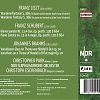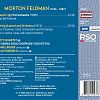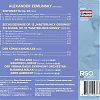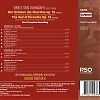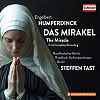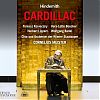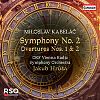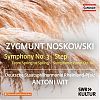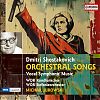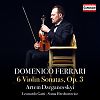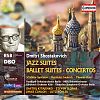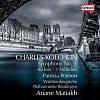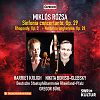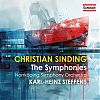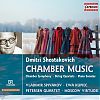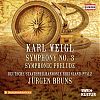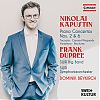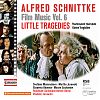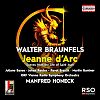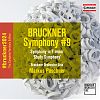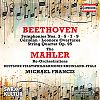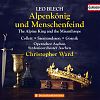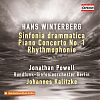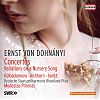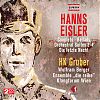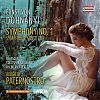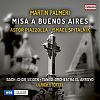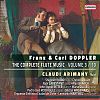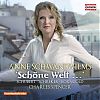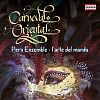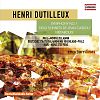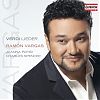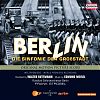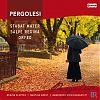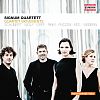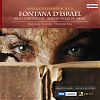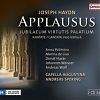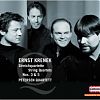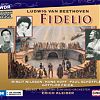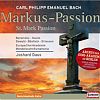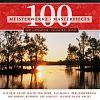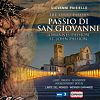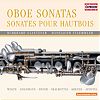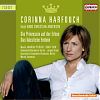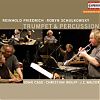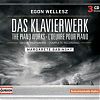cd

PARK – ESCHENBACH
Christopher Park · NDR SINFONIEORCHESTER · CHRISTOPH ESCHENBACH
Conductor Christoph Eschenbach always promoted besides his own career young talented musicians. Like the German and Korean rooted pianist Christopher Park who started meanwhile his own successful path. In one of the meanwhile seldom moments both artists came together for a concert and production with NDR Elbphilharmonie Orchester in 2014. This on the present CD documented event is compiled with solo piano pieces by Christopher Park and shows us that he has not to hide anymore his virtuos and high musically talent.
Hörprobe
Weitere Bilder

MORTON FELDMAN
ARDITTI QUARTET · ORF VIENNA RADIO SYMPHONY ORCHESTRA · MICHAEL BODER · EMILIO POMÀRICO
Meditative sound magic from New York City: Together with colleagues and friends such as John Cage, Christian Wolff and Earle Brown, Morton Feldman formed a circle of pre-eminent individualists within the American avant-garde movement of the 20thcentury, which, commencing in New York, founded a current of international significance. Crucial for his artistic development was undoubtedly his meeting with John Cage (1912–92), with whom he was in close contact after 1950. They mutually inspired each other to create music away from the compositional techniques conventional up to then, which particularly applied to the definition of specific notes, pitches and note durations or regular rhythm. It was also a commission from the Buffalo Philharmonic Orchestra and its Principal Conductor, Michael Tilson Thomas that led to the composition of String Quartet and Orchestrain 1973. Feldman’s final completed work Coptic Light, written in 1986, displays an even more gigantic orchestra than that in String Quartet and Orchestra. In his sensitive works we always gain the impression that they are cautious attempts to achieve coherent musical results, without running against the character of the instruments.
Hörprobe
Weitere Bilder
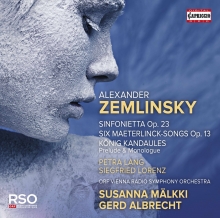
A. ZEMLINSKY
PETRA LANG · PETER LORENZ ORF VIENNA RADIO SYMPHONY ORCHESTRA · SUSANNA MÄLKKI · GERD ALBRECHT
Hörprobe
Weitere Bilder

LEONARD BERNSTEIN: MASS
ORF VIENNA RADIO SYMPHONY ORCHESTRA · DENNIS RUSSELL DAVIES
Few people had comparable charisma to him, few like him could blur the borders between ‘serious’ classical music and ‘entertaining’ popular music and few apart from him could find access to people of all generations like Bernstein. Living together and love instead of antagonism and hatred permeate his entire life’s work in words and notes. Many of the attributes mentioned apply to MASS, premiered in 1971. For the understanding of this unusual work, it is crucial to note that it is not really seen as a mass composition, but in keeping with Bernstein’s intentions as ‘a theatrical piece with the title ‘MASS’. So, it is perhaps the most audacious interpretation of the liturgical contents up to then and since then. The responses to the premiere were thoroughly ambivalent, as, apart from enthusiasm, there was also rejection on the part of conservativeminded circles. And the clearly conveyed message of peace was partly rejected since it could be understood not least as an unmistakable indictment of the Vietnam War still in progress.
Hörprobe
Weitere Bilder

DOHNÁNYI: DER SCHLEIER DER PIERRETTE / THE VEIL OF PIERRETTE Op. 18
ORF VIENNA RADIO SYMPHONY ORCHESTRA · ARIANE MATIAKH


